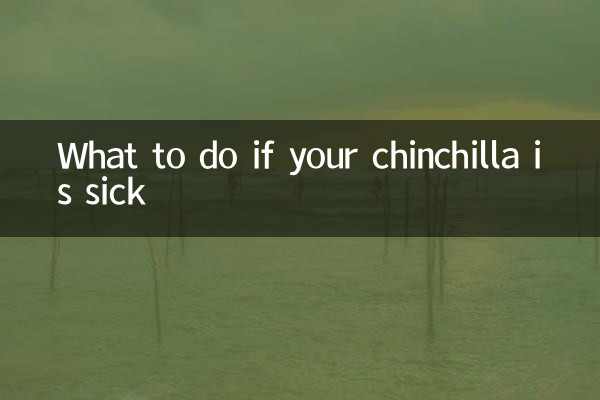What to do if your chinchilla is sick: common symptoms, causes and care guidelines
Recently, the topic of pet health has continued to rise in popularity across the Internet, especially the care of niche pets such as chinchillas, which has triggered widespread discussion. This article combines popular search data in the past 10 days to sort out common chinchilla diseases and response plans to help owners scientifically respond to emergencies.
1. Analysis of the popularity of chinchilla health topics across the entire network (last 10 days)

| keywords | peak search volume | associated diseases |
|---|---|---|
| chinchilla soft stool | Average daily 3200 times | Digestive system diseases |
| chinchilla hair loss | Average daily 2800 times | Skin disease/stress reaction |
| Chinchilla doesn't eat | Average daily 2,500 times | Dental disease/heat stroke |
| Chinchilla eyes red and swollen | Average daily 1800 times | Conjunctivitis/trauma |
2. Comparison table of symptoms of common diseases in chinchillas
| Symptoms | possible causes | Urgency |
|---|---|---|
| Stool that is mushy or watery | Improper diet/parasites | ★★★ |
| Partial hair removal with dandruff | fungal infection/mites | ★★☆ |
| Refusal to eat for more than 12 hours | Too long teeth/digestive stagnation | ★★★ |
| Shortness of breath with abnormal sound | respiratory tract infection | ★★★ |
3. Home emergency treatment plan
1.Digestive problems:Stop feeding fresh fruits and vegetables immediately, provide high-quality grass, and add pet-specific probiotics. If there is no improvement within 24 hours, seek medical attention.
2.Skin problems:Use chinchilla-specific bath sand to clean and keep the environment dry. The use of topical drugs for human use is prohibited, and fungal infections require antifungal preparations prescribed by a veterinarian.
3.Dental disease:Teeth grinding tools such as apple branches are provided. Severe teeth that are too long need to be trimmed by a professional veterinarian.
4. Data guide for preventive measures
| prevention project | Execution frequency | Things to note |
|---|---|---|
| Environmental disinfection | 1 time a week | Avoid using phenolic disinfectants |
| weight monitoring | daily | Be wary if the fluctuation exceeds 10% |
| dietary examination | Feed every time | The proportion of staple food should reach 70% |
5. Medical Preparation Checklist
1. Record the onset time, development process and dietary changes of symptoms
2. Bring fresh stool samples (within 2 hours)
3. Prepare common food for chinchillas for doctors’ reference
4. Use breathable cages during transportation to avoid direct sunlight.
Special reminder:Chinchillas are exotic pets, and ordinary pet hospitals may lack the conditions for diagnosis and treatment. It is recommended to contact an institution with qualifications for diagnosis and treatment of exotic pets in advance. During the high temperature period in summer, heat stroke cases increase significantly, so the ambient temperature needs to be kept between 20-25°C.

check the details

check the details